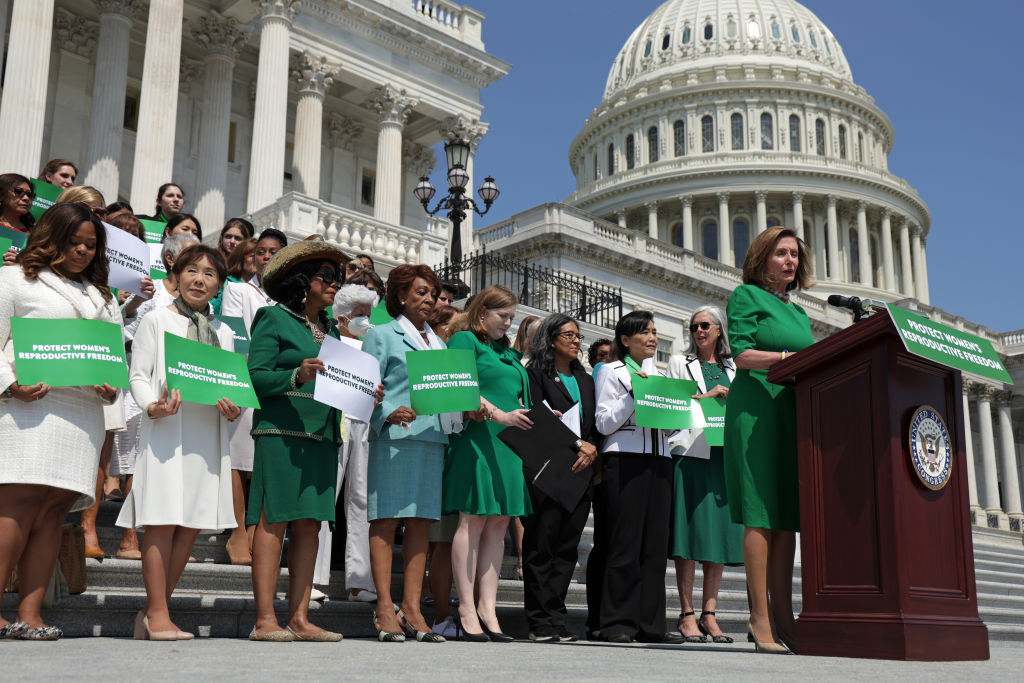Busting the Filibuster
(lengthy, disturbing, informative read)
Busting the Filibuster
10/4/2022 by Malliga Och
A Senate rule prevents the narrow Democratic majority from passing laws to protect women’s rights—for now. Here’s how the midterm elections could change that.

Speaker Nancy Pelosi speaks on July 15, 2022, ahead of the House passage of the Women’s Health Protection act—which, if it could overcome the Senate filibuster, would protect abortion rights nationwide. (Alex Wong / Getty Images)
This November, women’s rights and the future of an inclusive and diverse democracy truly are on the ballot. Following the overturning of Roe v. Wade, the Democratic-controlled House of Representatives advanced three bills that would protect access to reproductive healthcare.
The Ensuring Access to Abortion Act passed on a 223-205 vote, with only three Republican members voting in favor.
The Women’s Health Protection Act of 2022 passed on a 219-210 vote, with all Republican representatives and anti-abortion Rep. Henry Cuellar (D-Texas) voting against it.
After Justice Clarence Thomas argued in his concurrence in Dobbs v. Jackson Women’s Health Organization that the Supreme Court should revisit other precedents such as those guaranteeing access to contraception, the House proactively passed the Right to Contraception Act with a 288-195 vote, with only eight Republicans in support.
These bills now need to pass the Senate to become law. But all must overcome Republican-led filibusters to proceed to a vote by the full chamber. Senate Rule XXII requires senators to invoke what is called cloture to end debate and move to a vote. To do that currently requires a 60-vote majority. If the cloture motion is unsuccessful, the bill is killed by the filibuster. These critical House bills are not even close to meeting the 60-vote threshold, leaving women across the U.S. without adequate legal protections to access reproductive healthcare—and making filibuster reform that much more urgent. The filibuster has a long history of being used as a tool of obstruction to prevent progressive change. Senators have used the filibuster to uphold slavery and later to kill or delay civil rights legislation, such as anti-lynching bills and the Civil Rights Act. Between 1917 and 1994 half of all filibusters were used to block racial equity legislation.
Today, the filibuster stands in the way of proactive government. “It takes the 60-vote threshold to actually legislate affirmatively, to create change and to put things out there that don’t exist currently,” said Tré Easton, deputy director at the Battle Born Collective, a legislative and communications organization advocating for a progressive policy agenda. By requiring 60 votes to overcome a filibuster, the U.S. Senate has made American democracy subject to the tyranny of minority rule. President James Madison himself warned against giving the minority vast power, stating in Federalist Paper No. 58: “In all cases where justice or the general good might require new laws to be passed, or active measures to be pursued, the fundamental principle of free government would be reversed. It would be no longer the majority that would rule: the power would be transferred to the minority.”
. . . . .
If this summer has shown us anything, it is that from now on, women’s rights hang in a precarious electoral balance.
https://msmagazine.com/2022/10/04/filibuster-abortion-midterms-senate-abortion-era-women/
